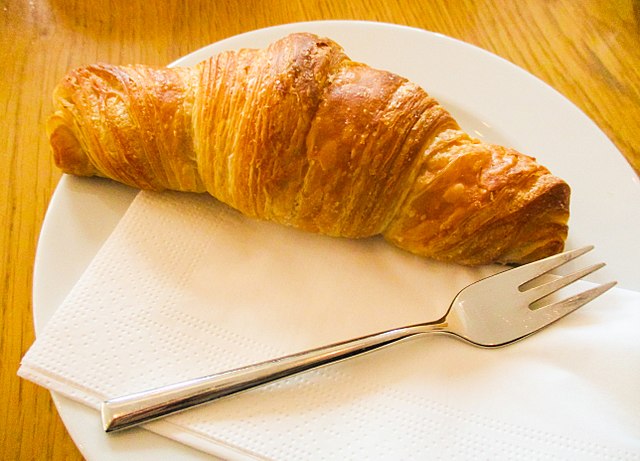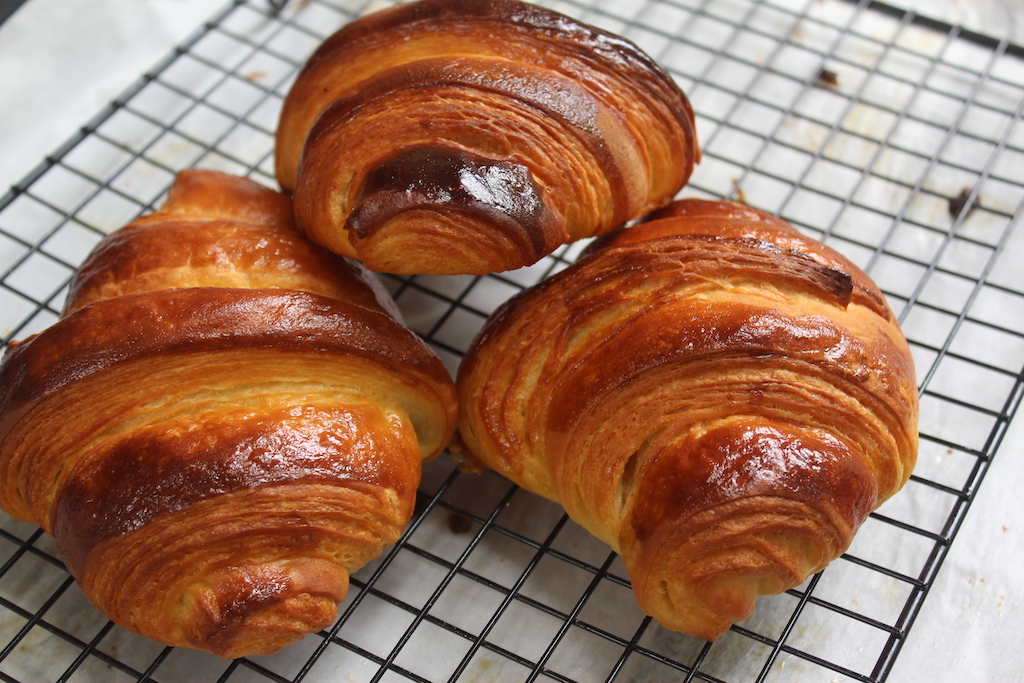Indulge in a culinary journey to France’s heartland with the iconic croissant, a buttery delight beloved worldwide. Picture this: a crispy, golden exterior giving way to layers of flaky pastry that melt in your mouth with every bite. Originating from France but embraced globally, the croissant is a staple of French bakeries and cafes, offering a taste of Parisian charm wherever you are.
Crafted with precision and a touch of artistry, the croissant’s irresistible aroma and texture make it a classic choice for breakfast or a light snack. Whether enjoyed with a steaming cup of coffee or as a standalone treat, its delicate yet rich flavor is sure to captivate your taste buds. Join us as we explore the allure of this French creation, uncovering the secrets behind its perfect balance of buttery goodness and airy perfection.
History of the French butter pastry
The history of the croissant is as layered as the pastry itself, rooted in a blend of culinary traditions and cultural exchanges. While many attribute its origins to Austria, the croissant gained its iconic status in France. The story begins in the 13th century, during the siege of Vienna, when bakers celebrated the defeat of the Ottomans by creating a crescent-shaped pastry, symbolizing the Ottoman flag. This “kipferl” was the precursor to what we now know as the French butter pastry.
As the pastry made its way to France, it underwent significant transformation. In the 19th century, Austrian baker Sylvain Claudius Goy is credited with introducing the kipferl to the French, where it was adapted to include layers of buttery dough. The introduction of yeast and the lamination technique, which involves folding butter into the dough multiple times, elevated the pastry into a sophisticated delight. It was in togelup Paris that the French butter pastry truly flourished, becoming a breakfast staple in bakeries across the city.
By the late 19th and early 20th centuries, the French butter pastry had solidified its place in French culture and cuisine. With the rise of cafés and patisseries, the French butter pastry became synonymous with leisurely mornings, often enjoyed alongside coffee or hot chocolate. Its luxurious texture and buttery flavor captured the essence of French culinary artistry, and today, it remains a beloved symbol of French gastronomy.

The Art of Making Croissants
Creating the perfect French butter pastry is an art that requires skill, patience, and an understanding of the delicate balance between ingredients. The process involves a technique called lamination, where layers of dough and butter are rolled and folded to create the pastry’s characteristic flakiness. This technique is not just about mixing ingredients; it’s about achieving the right temperature and consistency to ensure that the butter remains solid while being incorporated into the dough.
The initial step involves making a dough from flour, water, yeast, salt, and a bit of sugar. Once the dough is mixed and allowed to rise, the real magic begins. Butter is shaped into a flat square and chilled until firm, then the dough is rolled out into a large rectangle. The chilled butter is placed in the center, and the dough is folded over it, sealing it in. This is known as the “enclosing” step. After that, the dough goes through a series of folds and turns, typically three to four times, with resting periods in between to allow the gluten to relax.
Each fold creates layers, and the final product should have hundreds of thin layers that puff up beautifully when baked. The temperature of the environment plays a crucial role; too warm, and the butter will melt, ruining the lamination process. Once shaped into crescents, the French butter pastry are left to proof, allowing them to expand and develop their airy structure before being baked to a golden perfection. The transformation from dough to flaky pastry is not just a cooking technique; it’s a celebration of craftsmanship and tradition.
Ingredients for the Perfect French butter pastry
The foundation of any great French butter pastry lies in its ingredients, each playing a vital role in creating the perfect balance of flavor and texture. The primary ingredients include high-protein flour, butter, water, yeast, sugar, and salt. High-protein flour is essential as it provides the necessary gluten structure to support the layers of dough and butter, ensuring that the croissant rises beautifully during baking.
Butter is undeniably the star of the show. For a French butter pastry to be truly delightful, it must be made with high-quality, unsalted butter. The fat content in butter contributes to the rich flavor and flaky texture. The lamination process relies on the precise handling of butter, which should be cold and pliable but not too soft. This balance is crucial; if the butter melts into the dough, the croissant will lose its layers and become dense rather than airy.
Yeast, the leavening agent, is responsible for the croissant’s rise and airy texture. The fermentation process not only helps the dough rise but also develops complex flavors. Sugar adds a touch of sweetness, while salt enhances the overall taste and strengthens the gluten structure. Each ingredient is chosen with care, and the right proportions can make all the difference in achieving that coveted buttery delight.
Croissant Variations Around the World
While the traditional French croissant is a classic favorite, variations of this beloved pastry can be found across the globe, each offering a unique twist on the original. In Australia, the “croissant sandwich” has gained popularity, featuring layers of smoked salmon, cream cheese, and fresh herbs, elevating the pastry to a savory delight that’s perfect for brunch. In Japan, bakeries serve a “melon pan” croissant, which combines the texture of a pastry with a sweet cookie crust, creating a delightful fusion of flavors and textures.
In the United States, the croissant has taken on new forms, leading to innovations such as the “Cronut,” a hybrid pastry that blends pastry and doughnut characteristics. Created by pastry chef Dominique Ansel in New York City, the Cronut has become a viral sensation, filled with cream and topped with glaze, showcasing the versatility of the pastry in contemporary pastry culture.
In addition to these modern interpretations, many countries have their own traditional versions of croissants. For example, in Turkey, you can find “börek,” a flaky pastry filled with cheese or spinach, which shares a similar texture to the croissant but is shaped differently and often baked in a pan. These variations highlight the adaptability of the pastry, allowing it to transcend cultural boundaries while still retaining its core qualities.

Croissants vs. Other Pastries
When it comes to pastries, croissants are often compared to other favorites like danishes, puff pastries, and brioche. Each of these pastries has its unique characteristics, but the croissant stands out for its distinct flaky texture and buttery flavor. Unlike puff pastry, which is typically made with a higher ratio of butter to dough and is lighter, pastrys have a more structured layer due to the yeast, giving them a satisfying chewiness.
Danish pastries, while also flaky and sweet, usually contain a richer filling, such as cream cheese or fruit, and are often topped with icing or glaze. This sets them apart, as danishes tend to be more dessert-oriented, whereas croissants are versatile enough to be enjoyed in a variety of contexts, from breakfast to snacks. Brioche, on the other hand, is a rich, soft bread that contains eggs and sugar, resulting in a sweet taste and airy texture, but it lacks the flaky layers that croissants are known for.
Ultimately, the choice between croissants and other pastries often comes down to personal preferences. For those who enjoy a buttery, flaky texture with a hint of sweetness, the pastry reigns supreme. Its versatility allows it to pair beautifully with both sweet and savory accompaniments, making it a timeless favorite in the world of baked goods.
Popular Croissant Recipes
For those eager to bring the delightful taste of croissants into their own kitchens, there are numerous recipes that cater to various skill levels. A classic pastry recipe typically begins with a straightforward dough mixed from flour, yeast, sugar, and salt. After allowing the dough to rise, the lamination process follows, where cold butter is incorporated through a series of folds and rolls.
For a twist on the classic, chocolate croissants, or “pains au chocolat,” are a popular variation that involves placing dark chocolate pieces inside the rolled dough before shaping. The result is a decadent treat that combines the rich flavor of chocolate with the light, flaky texture of a croissant. Another delightful recipe is the almond pastry, which is filled with almond cream and often topped with sliced almonds and powdered sugar, providing a nutty sweetness that perfectly complements the buttery pastry.
For those looking for a simplified version, there are quick croissant recipes that utilize pre-made puff pastry. While it may not achieve the same depth of flavor as a traditional croissant, it can still yield a satisfying result for those short on time. Whether sticking to the classic or experimenting with different fillings, making croissants at home can be a rewarding experience, evoking the charm of a French boulangerie right in your kitchen.
Where to Find the Best Croissants
If you’re not ready to embark on the journey of making croissants at home, don’t worry—there are countless bakeries and cafés around the world that offer exceptional pastrys. In Paris, the birthplace of this delightful pastry, famous spots like La Maison Pichard and Du Pain et des Idées draw locals and tourists alike for their artisanal creations. Each bakery has its unique take, often employing traditional methods that have been passed down through generations, ensuring that every croissant maintains its flaky, buttery perfection.
In the United States, cities like New York and San Francisco boast a vibrant bakery scene with establishments like Balthazar Bakery and Tartine Bakery, known for their outstanding pastrys. These bakeries often experiment with flavors and fillings, providing a modern twist on the classic French staple while remaining true to its roots. Exploring local bakeries can lead to delightful discoveries, as many places offer seasonal varieties and unique interpretations of the croissant.
Beyond the famous spots, don’t overlook smaller, local bakeries that often produce remarkable croissants. Many neighborhoods have hidden gems where bakers pour their passion into creating high-quality pastries. The best way to find these treasures is to ask locals for recommendations, ensuring that you experience the authentic taste of croissants made with love and expertise.
Health Benefits of Croissants
While croissants are often seen as indulgent treats, they can also offer some surprising health benefits when enjoyed in moderation. One of the primary ingredients, butter, contains healthy fats that can provide essential fatty acids, which are crucial for various bodily functions. Additionally, butter is a source of vitamins A, D, E, and K, contributing to overall health when consumed as part of a balanced diet.
Moreover, the fermentation process involved in making croissants enhances the bioavailability of nutrients, making them easier for the body to absorb. The yeast in croissants can also be beneficial for gut health, promoting a healthy digestive system. When paired with nutrient-dense foods like fruits or nuts, pastrys can become part of a satisfying and balanced meal.
It’s important to remember that moderation is key. While croissants can be enjoyed as part of a healthy lifestyle, overindulgence can lead to excessive calorie intake. Savoring a croissant as an occasional treat can provide enjoyment without compromising overall health. Balancing croissants with various whole foods and maintaining an active lifestyle can allow you to appreciate this delightful pastry without guilt.

Croissant Culture in France
In France, croissants are more than just a baked good; they are a cultural icon that reflects the country’s culinary heritage. The act of enjoying a croissant is often steeped in ritual, from leisurely breakfasts at cafés to quick snacks on the go. In many French households, a fresh croissant is a staple for breakfast, often accompanied by jam or cheese and a hot beverage.
The café culture in France is intrinsically linked to the enjoyment of croissants. Patrons often sit at outdoor terraces, savoring their pastries while watching the world go by. This simple pleasure embodies the French philosophy of slowing down to enjoy life’s little moments. Bakeries, or “boulangeries,” play a central role in local communities, where bakers take pride in their craft, ensuring that every croissant is made with care and expertise.
Festivals and celebrations also often feature croissants, showcasing their significance in French culture. From special occasions to everyday moments, pastrys bring people together, celebrating the joy of sharing delicious food. Whether enjoyed in a bustling Parisian café or a quiet village bakery, the croissant remains a symbol of French artistry and culinary excellence, endearing it to hearts around the world.
Conclusion
The croissant, with its crispy exterior and airy, buttery layers, is a pastry that transcends borders and cultures. Its rich history, artful creation process, and diverse variations illustrate its universal appeal. Whether indulging in a classic, chocolate-filled delight, or savoring a modern twist, croissants continue to captivate food lovers everywhere. If you like reading this article then please consider visiting kaijuphile to find more article like this.

